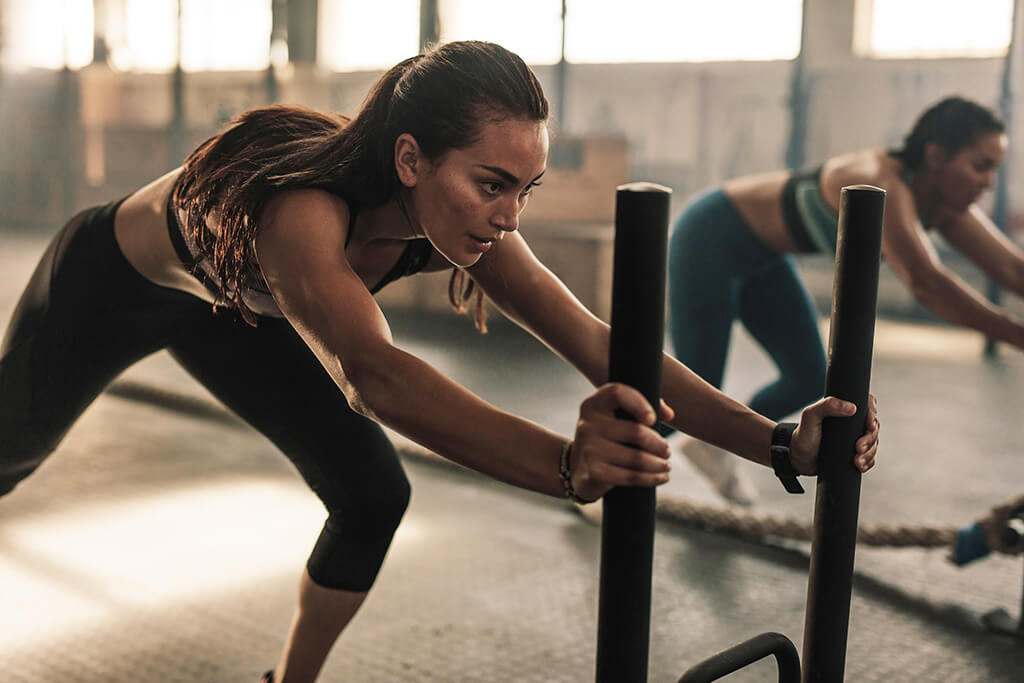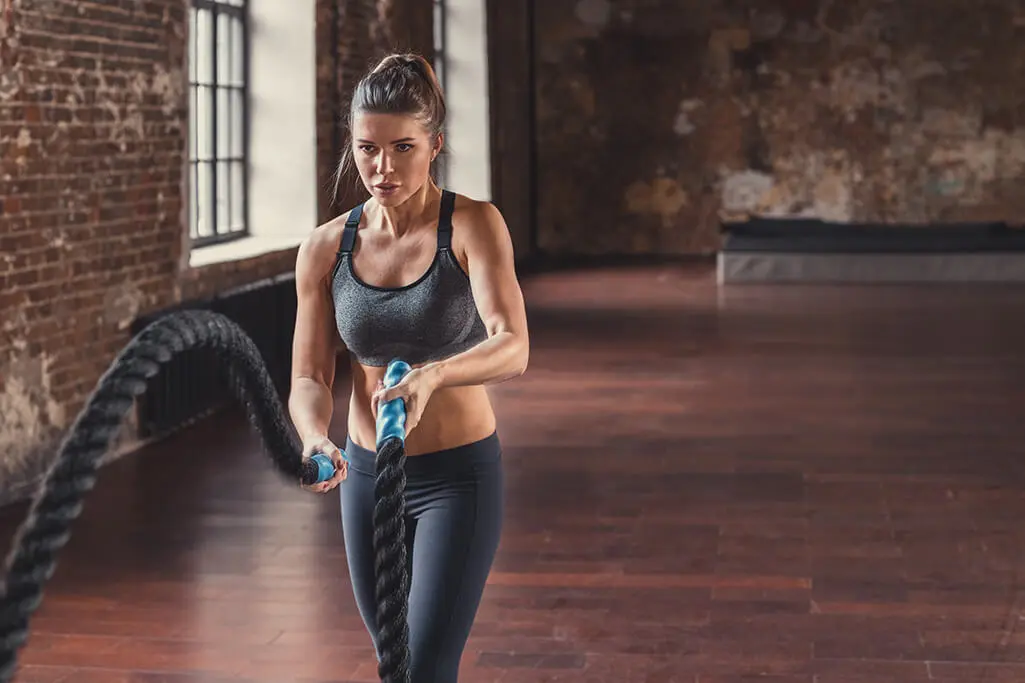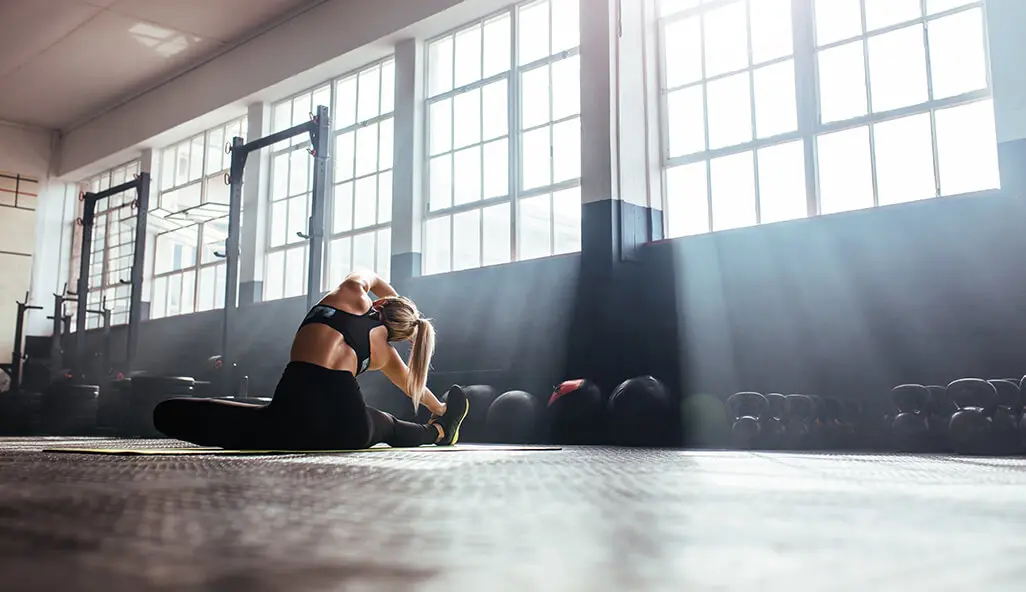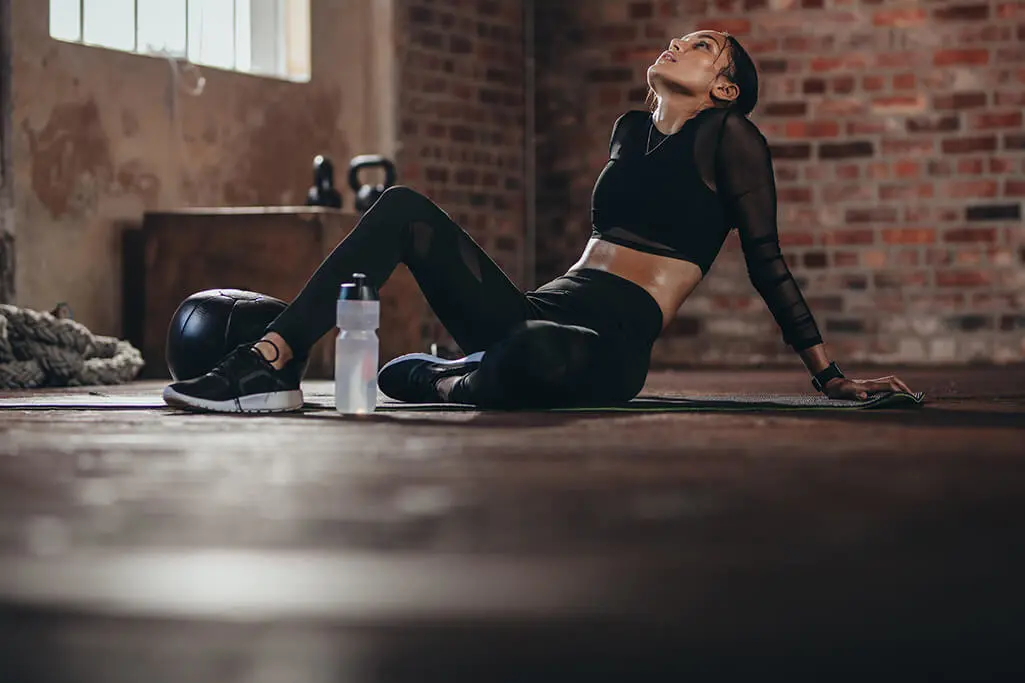High-Intensity Resistance Training: Should You Try It?

November 15, 2019

High-intensity resistance training (often referred to as HIRT) combines strength and high-intensity training. In high-intensity interval training (HIIT), you move from one cardio exercise to the next with short rest breaks in between to maintain a high heart rate.
High-intensity resistance training still focuses on high-intensity exercises, but there is an additional element of resistance to help strengthen and build lean muscle. This way of working out has been around since the 1970s, but it has recently gained popularity as an effective way to encourage the results that many of us want from our workouts!
You’ll be focusing on hitting a number of reps while lifting weights with the correct form. Get ready for an intense, high-energy workout!
What is high-intensity resistance training?
High-intensity resistance training is a style of training where you perform short, intense, and focused blocks of resistance training, with a short recovery period between each block of work.
The workouts can be structured as circuits, with short breaks either following a series of different strength exercises, or a certain number of reps or time. You can do full-body workouts or focus on your upper or lower body.
Try:The Perfect Full-Body HIIT Workout For Beginners
HIRT workouts don’t tend to focus on a single body part — for example, shoulders — as this would be very tough and could also put you at risk of overtraining.

Benefits of high-intensity resistance training
High-intensity resistance training is a very effective training style that you can try in Sweat Trainer Chontel Duncan'sFIERCE program or Cass Olholm’s High Intensity Strength programs. Here’s what makes the workouts so powerful:
It's short and effective
Many people find it hard to find the time to workout. High-intensity resistance workouts are highly effective and take less time than a full resistance workout, making them easier to fit into a busy schedule.
Increase VO2 max
This training style can increase your overall fitness, including your aerobic endurance or VO2 max. VO2 max is a measure of how efficiently your body takes up oxygen during exercise.
Increase lean muscle and strength
Strength training stimulates micro-tears in your muscle fibres, which then repair and adapt to grow in size and strength Building muscle and improving body composition is a common fitness goal — and HIRT delivers!
Benefits of combining cardio and strength training
If you enjoy strength training but don’t like cardio, HIRT is a way to do both at once! This style of training is also ideal for anyone who is short on time and can’t fit all of their cardio and strength workouts into the week.
Low impact options
Many HIIT workouts include high-impact plyometric (jumping) exercises to get your heart rate up. Because HIRT focuses on resistance training, you can select strength-based exercises that don’t have a high impact on your joints and still experience the benefits of high-intensity training.
Train at home or at the gym
A high-intensity resistance workout doesn’t necessarily require gym machines or large pieces of equipment. You can do a HIRT workout using your bodyweight, dumbbells, kettlebells and resistance bands!
Workouts can be done alone
You won’t need a partner to do these workouts, but you can do them with a friend if you want to make your workout social!
Workouts aren’t boring
These workouts require you to be focused, engaged and give it your all — there’s no time to get bored! The challenge, pace and variety mean many people find they stick to high-intensity resistance training more than traditional weights training.
Adding in the occasional HIRT workout can also keep workout boredom at bay and prevent your progress from plateauing.

Risks of high-intensity resistance training
As this is a form of high-intensity training, you need to have a base level of fitness before you start. It’s also not a form of exercise you want to do every day.
You should allow at least 48 hours between these workouts for your body to recover, prioritise rest days each week and listen to your body’s signals so you don’t risk burnout or injury from overtraining.
Tips for high-intensity resistance training
If you’re keen to try high-intensity resistance training, here are some tips to make your workout effective and enjoyable!
Music matters
With any intense workout, playing powerful beats can help you to maintain your focus and keep the energy high! A motivating workout playlist is a must for high-intensity workouts, so grab your headphones and find your favourite workout songs before you start.
Keep it short at first
A high-intensity resistance workout can last anywhere between 12 and 45 minutes. If you are new to this style of training, start with shorter workouts and increase the length as your body adapts and your confidence builds.

Warm up
A warm-up is important to get the blood flowing to your muscles before every workout. Include a few minutes of cardio and some dynamic stretching to prepare your body.
Focus on form
Just because you’re doing a high-intensity workout doesn’t mean rushing through the movements and compromising your form for the sake of speed!
Focus on maintaining correct form throughout the workout, even if that means slowing down your pace as you get tired. If you want to add a new exercise into your high-intensity resistance workout or notice there’s an unfamiliar exercise in your Sweat program, it’s a good idea to practice it first to master your form before beginning your session.
Go for max effort
For a high-intensity workout to be most effective, the ‘work’ periods need to be your maximal effort (or close to). This is YOUR maximum effort, don’t compare yourself to anyone else.
Complete the exercises at the maximum pace you can while still maintaining the correct form. And remember, depending on factors like sleep, nutrition, stress and stages of your menstrual cycle, what your max effort feels and looks like can change!

Keep your rests short
Allow for rest periods of 20-60 seconds between each work period — this is enough time for your body to recover, and you’ll reap the benefits of keeping the intensity high.
Some longer workouts will include longer rest periods of 1-2 minutes between exercise sets so you can recover and sustain your effort and correct technique for the whole session.
Allow time to recover
As we mentioned, we don’t recommend doing high-intensity resistance training every day! Depending on what other training you are doing, allow at LEAST a day between sessions and remember to listen to your body. Active recovery and low-intensity cardio like walking is a great way to keep moving on your rest days, or you could incorporate other training styles like yoga or Pilates.
Learn more:Low-Intensity Cardio Training: What Is It & How Does It Work?
Use high-intensity resistance training to reach your goals
If you are looking to change up your fitness routine, have been struggling to find a workout style that fits into your schedule, or are experiencing a slump in motivation, high-intensity resistance training might be exactly what you’re looking for!

A more empowered you starts with Sweat, and our editorial team is here to bring you the latest fitness tips, trainer recommendations, wellbeing news, nutritional advice, nourishing recipes and free workouts.
* Disclaimer: This blog post is not intended to replace the advice of a medical professional. The above information should not be used to diagnose, treat, or prevent any disease or medical condition. Please consult your doctor before making any changes to your diet, sleep methods, daily activity, or fitness routine. Sweat assumes no responsibility for any personal injury or damage sustained by any recommendations, opinions, or advice given in this article.
Fitness